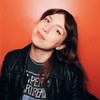You know what they say: the Internet is forever. If possible, try to avoid posting nude photos, documentation of cocaine binges, or other forms of self-incrimination on social media. Or if you do, don't expect that they won't make their way back to your teachers, your boss, your significant other, or your parents. After all, a screenshot is eternal.But what if the people lurking through your 987 selfies aren't your ex's ex or your nosy coworker, but a team of researchers looking to document just how often you get wasted?After all, if you were 14 and got a call from a researcher saying that he just wanted to know how often you kill a bottle of apple schnapps at a sleepover behind your parents' back, would you answer truthfully?Probably not, but you might post some Pucker-fueled pix of you and your friends TPing a frenemy's house on Instagram. Plus, there's a lot you can find through hashtags in mere seconds, versus the laborious nature of conducting surveys individually.Researchers can't sort users by their specific ages, so instead they use "computer vision techniques" that actually scan and analyze users' profile pictures to assess their age group, gender, and race. And you thought the NSA was nosy.According to Science Daily, the researchers then "monitored drinking-related activities via [the users'] Instagram photos by analyzing the social media tags associated with these photos using a constructed Internet slang dictionary and also any alcohol brands the users follow." ("Hey kids, what does 'turnt' mean?")So what kind of revelations were made by the researchers, after using all of this fancy technology to spy on trashed 16-year-olds?Well, teenagers apparently drink more on weekends, holidays, and at nighttime. Teen boys drink, and teen girls drink. Groundbreaking stuff. However, they had more luck digging into things like drink preferences, which could have implications about which brands are successfully marketing to the underage crowd.
Advertisement
At the University of Rochester, that's been the name of the game. The Instagram game, that is.Led by professor of computer science Jiebo Luo, the researchers have been mining photos and text from teen Instagram accounts as a means of illuminating underage drinking patterns among its users. The method is quicker, easier, and less expensive than relying on surveys, which require voluntary and truthful data collection from participants. And on top of being able to discern how much and how often One Direction fans are drinking, the information gleaned from Instagram can be telling in other ways—for instance, identifying the most popular types and brands of alcohol that teenagers are swiping from convenience stores and their parents' liquor cabinets.And their pool of subjects isn't exactly small: Instagram is insanely popular among teens, with more than half of all American teens using the photo-sharing social network regularly, topped only by Facebook in terms of its prevalence. And if a picture is worth a thousand words, researchers have billion of words to choose from when it comes to the neverending feed of teens getting hyphy out of their skulls. In a paper about the study, Luo says that underage drinkers "are willing to share their alcohol consumption experience" and that the passive absorption of their collection of this information allows them to draw conclusions while leaving teens in an "undisturbed state."READ: This Instagram Chef Is Using Hot Pockets to Troll Tweezer Food
Advertisement
The research team also acknowledges that this kind of thing could backfire and be used for targeted marketing to teens. But they're hoping that the results of the study will be used for "intervention," and to reduce underage drinking rates.The University of Rochester research team will be presenting their work at this week's IEEE International Conference on Big Data. Keep an eye out for the telling photos from that night in August when you guys got super lit in Madison's grandma's basement!But at least teens can rest assured that their followers care what they're up to.READ: Why All of That Instagram Food Porn Is Shot From Above
